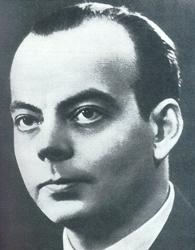Antoine de Saint-Exupéry wrote one of the most popular books ever published, “The Little Prince.” His adventurous spirit prompted him to become a pilot for the French air force, and later an airmail and test pilot. His life ended during a mission over the Mediterranean Sea.
Antoine de Saint-Exupéry’s Early Days
Antoine Jean-Baptiste Marie Roger de Saint-Exupéry was born on June 29, 1900, in Lyon, France, to an aristocratic French family. His father, Viscount Jean de Saint-Exupéry, died when he was a young boy. His mother, Marie de Fonscolombe, moved her five children into a castle owned by her aunt, where Antoine and his four siblings had an idyllic early childhood.
In 1912, Antoine flew for the first time, receiving a ride from Gabriel Wroblewski in a Berthaud-Wroblewski. Nine years later, while serving in the French air force, he received his pilot’s license. He became a commercial pilot, flying airmail to the Sahara desert. It was during this time that he began to write about his adventures as a pilot.
In the 1930s Saint-Exupéry worked as a test pilot and also as a reporter. He suffered injuries from a few flying accidents, and also patented 14 aircraft-related inventions.
Sources in this Story
- The Aviation History On-Line Museum: The Life and Times of Antoine de Saint-Exupéry
- IRT Saint Exupery: A. de Saint Exupery, the Scientist
- Encyclopedia Britannica: Antoine de Saint Exupery
- The New York Times (International Herald Tribune): Book: Antoine De Saint-Exupery
- New York Times: A Grounded Soul: Saint-Exupery in New York
Saint-Exupéry’s Notable Accomplishments
Antoine de Saint-Exupéry’s first two books were written about flying. “Carrier Sud,” written in 1929 and translated to “Southern Mail” in 1933, was about a young airmail courier; “Vol de Nuit,” written in 1931 and translated to “Night Flight” in 1932, was written about the adventure and danger faced by the very first pilots. He later wrote about his own experiences as a pilot in the novel “Wind, Sand and Stars.”
At the start of World War II, Saint-Exupéry rejoined the French air force, but when the Nazis overtook France he left the country to live in the United States.
He used his newfound free time to write the book “Flight to Arras,” published in 1942. Stacy Schiff, author of “Saint-Exupéry: A Biography,” writes in The New York Times that Saint-Exupéry’s time in the United States was not a happy—he was in poor health, felt isolated, longed for his country, and had a somewhat estranged relationship with his wife. Some say it is because of his unhappiness that he wrote and illustrated the book for which he is most well known, “Le Petit Prince” (“The Little Prince”).
“The Little Prince” is, according to Barry James of the International Herald Tribune, “an allegory of Saint-Exupéry’s own life,” demonstrating his love for his wife (represented by the rose in the book), his search for companionship, his belief in the magical, and his search for inner tranquility.
The Man and His Work
The Rest of the Story
In 1943 Saint-Exupéry left the United States to rejoin some of his countrymen in the air force in North Africa. In 1944 he flew out for a reconnaissance mission and was not heard from again.
Until recently, the cause of Saint-Exupéry’s death was unknown. In 1998 a bracelet was found that is believed to have belonged to Saint-Exupéry. In 2004 the remains of his crashed plane were identified on the Mediterranean seabed. Some believed that he crashed his plane intentionally.
In March of 2008, however, a former German pilot, Horst Rippert, claimed that he pursued and shot down Saint-Exupéry’s plane. Rippert told The Associated Press that he was a fan of Saint-Exupéry’s work: “In our youth, at school, we had all read him. We loved his books. If I had known, I would not have opened fire. Not on him!”
This article was originally written by Haley A. Lovett; it was updated May 24, 2017.











